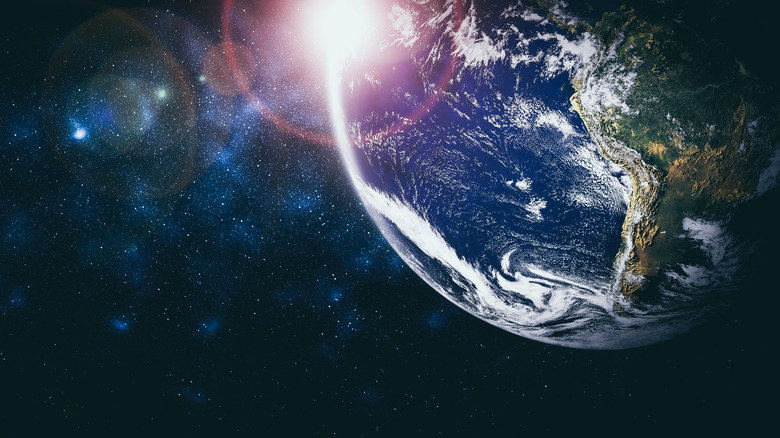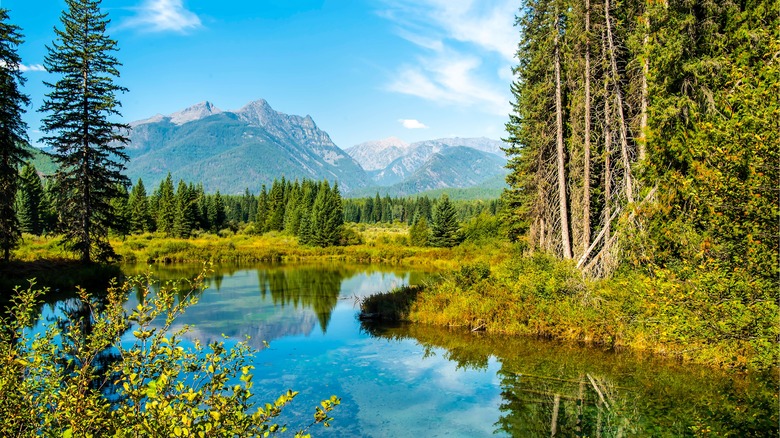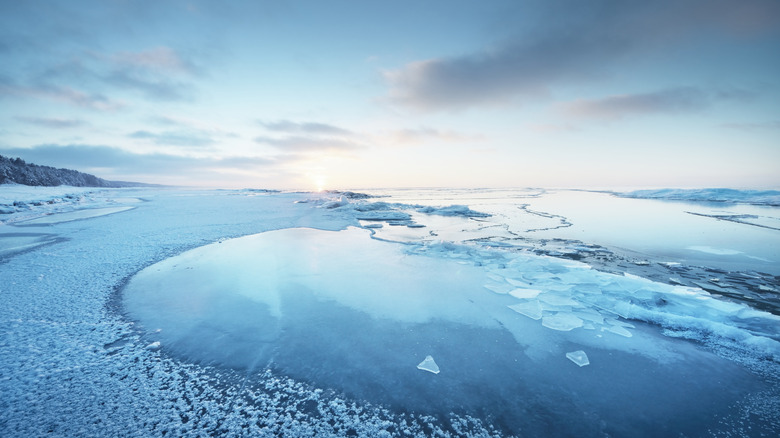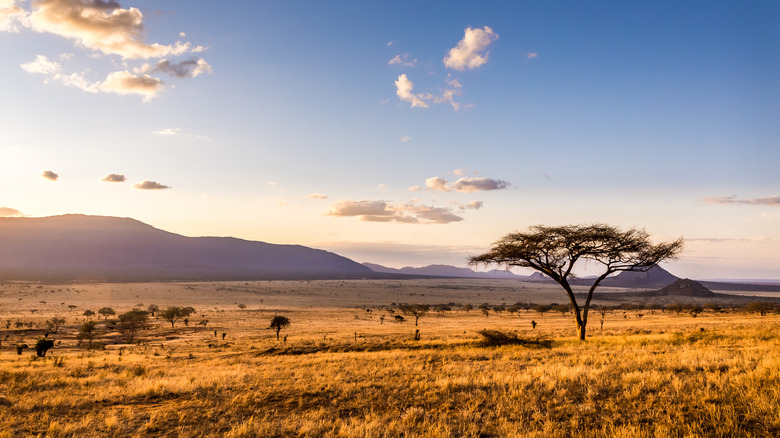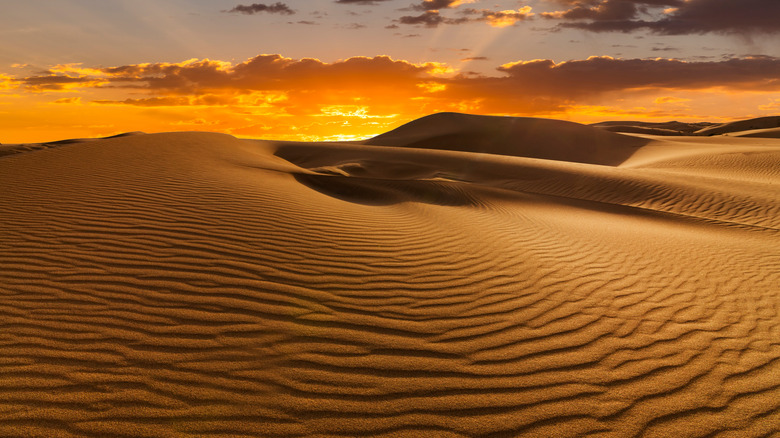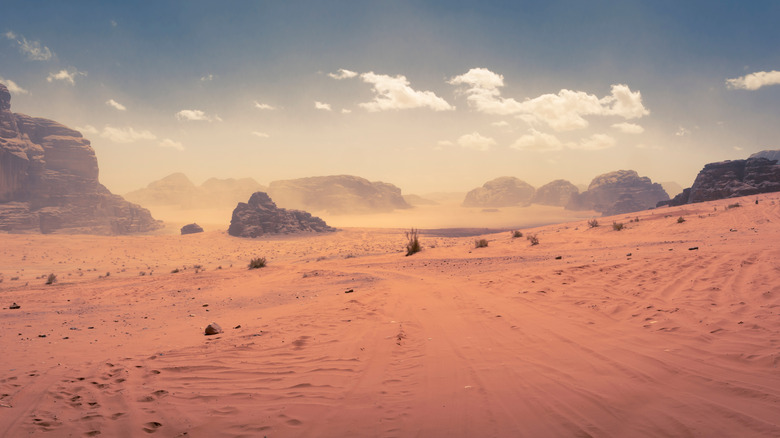The Exoplanets Most Hospitable To Human Life
Lakes of noxious methane; rainstorms of molten iron; windstorms of raging glass; coal-black terrain running with endless lava; deadened rocks and punishing gravity. Doesn't sound like a good time, does it? Those planets don't exist in sci-fi, but reality. Right here, in our very own galaxy, are planets that would incinerate, eviscerate, crush, and flat out annihilate you, according to Space. These planets are a far cry from our placid, water-flush sphere of homeostatic weather conditions, tectonics stable enough to not obliterate civilization, and a protective electromagnetic shield that defends us from cosmic rays.
But fear not. There are so, so many planets in existence that if something happens to our beautiful, perfect home — Earth — we've got back-ups... right? Kind of. There are, at maximum, 3.2 trillion — yes, trillion — planets in our own galaxy alone (via Universe Today). Current estimates reveal around two trillion galaxies in the entire universe (via Big Think); you can do the math from there (or not). We've got 4,000 exoplanets — planets outside of our own solar system — even only within 50 light years of Earth (via Project Eden). But space is so vast that our fastest ship, traveling at 250,000 kph (around 155 mph), would still take about 18,000 years to reach only the nearest star, Alpha Centauri (via Science). What to do?
No matter what, researchers continue to prowl the skies in search of alter-Earth. At the very least, searching is better than doing nothing.
A new home like the old one
It should go without saying that the conditions on Earth are perfect for us. This is where we evolved, after all. Diurnal (light-day) cycle, gravity, composition of atmospheric gases, life- and food-cycles, plenty of water, at a perfect distance from the sun (in the habitable "Goldilocks zone," as NASA explains), and so on. There are likely zero copies of Earth floating around, no matter how festooned with planets the galaxy and universe may appear. But if push comes to shove, we could probably make do on a world that's similar to ours.
Case in point: It took all the way until 2014 to find the first exoplanet that truly resembles Earth, in the constellation Cygnus about 500 light years away. As NASA describes, Kepler-186f is a rocky planet (not made of gas) only 10% bigger than Earth, has a 130-day year orbiting its sun, and rests just at the edge of its system's habitable zone. Because of its location, it gets about one-third of the sunlight that we do, at maximum. This means the brightness of its sun at noon is about equal to ours at sunset. While we're not sure about the atmosphere of Kepler-186f, the presence of life in any form, and the existence of liquid water, seems promising.
A bit big, a bit old, a bit cold
Lots of the exoplanets we've found are either gas giants or "super-Earths," rocky planets much bigger than ours. Super-Earths, as NASA says, aren't necessarily habitable despite having the name "Earth" in their title. They might be ice worlds, fire worlds, desert worlds, water worlds, whatever, and can be up to 10 times the mass of Earth but smaller than Neptune. They're also therefore called "sub-Neptunes," or "mini-Neptunes." These requirements exist for the purposes of categorization and organization, because most exoplanets we've discovered are between two and 10 times bigger than Earth, as Forbes explains.
Despite there being some disagreement on the habitability of super-Earths — factoring in mass, rockiness, speed of rotation, etc. — researchers are still eyeing several super-Earths as potentially good candidates for human life. One of them, Kapteyn b, is the oldest super-Earth we've got on record. At 11.5 billion years old, over twice as old as Earth, it formed less than two billion years after the birth of our 13.8-billion-year-old universe (per Space). This has given life plenty of time to evolve. It might also mean that life on Kapteyn b has already run its course. and the planet is lifeless.
Kapteyn b is within its star's habitable zone, is five times as massive as Earth, and has a swift 48-day year. It also has a sister planet, Kapteyn c, that's a bit further out and is probably too cold. It finishes its year in 121 days.
More Earth-like than Earth
If we land on another planet and begin roving across its landscape looking for food, we'd better hope the atmosphere is something we can breathe. Earth's atmosphere is composed of a very delicate combination of gases: 78 percent nitrogen, 21 percent oxygen, about 1 percent argon, 0.04 percent CO2, and the rest trace elements (via Space). Most air is concentrated in the lowest layer, the troposphere. The highest layer, the exosphere, gradually bleeds off into space. Earth's gravity creates the right air pressure (density of gases) to breathe on the surface, and also holds the gases in place.
So how in the world can we check an exoplanet's atmosphere from Earth? This is where astrobiologists come into play. Astrobiologists — people who search other planets for what NASA calls "biosignatures" — check the infrared and visible light spectrums for the presence of certain gases in alien atmospheres. On Earth, oxygen and methane didn't show up in significant quantities until 2.4 billion years ago, as the journal Plant Physiology on the National Library of Medicine says. Why? Plant photosynthesis.
One planet above all others matches atmospheric requirements: Kepler 442-b (via Room). At least, we think so. Atmospheric analyses have yet to be conducted, but the planet's albedo (sunlight that hits is surface) and orbit (eccentric, i.e., not a perfect circle) seem promising to foster plant life, and therefore the right atmosphere. As Wired reports, Kepler 442-b might even be more hospitable to life than Earth itself.
Locked in place
Some exoplanets look like good candidates, like Kepler 22b, with a livable average temperature of 15.5 degrees Celsius (about 60 degrees Fahrenheit) (via NASA). But, it's possible that the whole thing is one giant ocean. Gliese 581g looked like a decent find until researchers realized its initial discovery in 2010 was a mistake (via Space). Others like Tau Ceti e are close to us at 11.9 lightyears away, but we're not sure if it's mild enough for a stroll in a light jacket, or if its surface would melt your face (also via Space).
Others, like Wolf 1061c, don't spin. Wolf 1061c is tidally locked to its sun, like our moon to Earth, meaning that one side is always light, and the other darkness. As Science Alert continues, Wolf 1061c is also very close to its sun, at 10 percent the orbit of Earth. Normally, this would mean that the surface is scorching, but Wolf 1061's sun (a red dwarf) is old and much cooler than ours. Also, even though most red dwarves are unstable, Wolf 1061c's is shockingly stable. Wolf 1061c is also 4.3 times bigger than Earth.
All in all, this means that Wolf 1061c is an extremely different place from Earth, but still makes the cut as one of the more promisingly habitable planets. There might even be liquid water on its surface. At 14 light years away, it's also currently the closest for the best out of all available options.
Close, but not quite
The last candidate on our list is GJ 667 Cc. GJ 667 Cc is one of three potentially habitable planets – GJ 667 Ce and GJ 667 Cf being the others — in its system's Goldilocks zone (via Insider). That system's star, GJ 667 C, is also one of three stars in a triple star system. It also happens to be part of the constellation Scorpio 22 lightyears away (via Space). The upside here, besides the triple-sun sunrise and sunset, is the possibility that any of the three planets may be able to host life. None are ideal, though.
Lest you think this brief list comprises all of the potentially habitable planets that we know about, have a look at a chart drafted by the Planetary Habitability Laboratory (PHL) in Puerto Rico. It uses various criteria to create an overall index — a single figure like 0.84 out of 1.00 — to gauge the suitability of various planets. This project is just one of many, each with slightly different results; Project Eden out of the University of Arizona is another. Charting strange new worlds is an ongoing task, even if only done while sitting on our butts in earthbound chairs.
Even so, it might not seem like many of the choices for other Earths are too fantastic. But that just goes to show you exactly how unique and special our planet is, even out of literal billions in the Milky Way.
